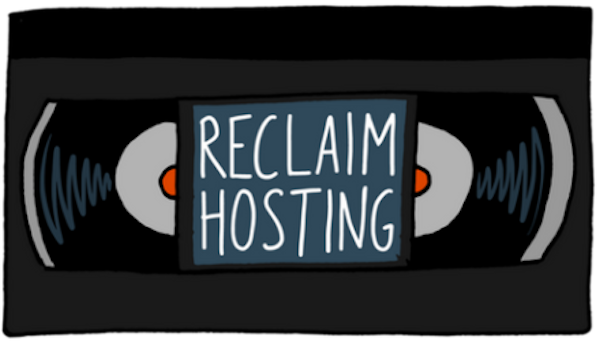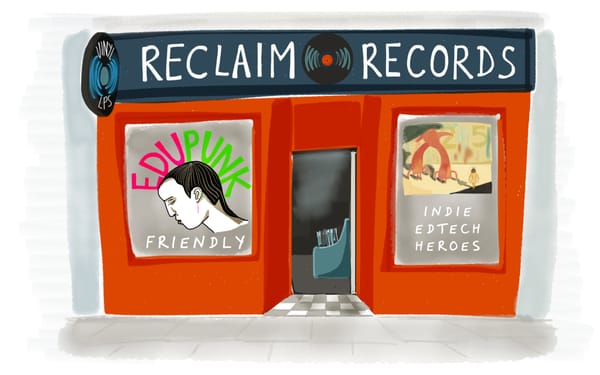Stanford University: A decade of Domain of One's Own

Stanford University has a long, solid track record in technological innovation, so it won’t come as a surprise that Stanford’s academic community was one of the first to adopt the pioneering Domain of One’s Own program back in 2015.
This case study provides a unique insight into what this innovative institution has achieved by establishing their Domain of One’s Own, how the program has developed and how it will continue to serve the needs of students and staff in future.
Early adoption
To understand the current context we began by going back to where it all began: a very technically based community of staff and students using individually hosted websites since the early 90s. What started as an AFS file system, which offered a transient academic population the chance to host sites for classes, for research and to share work was widely adopted.
Larry Dillard, the current owner of the Domain of One’s Own program, for example, had his site since 1993, and recounts the days of early adoption when all professors and teaching associates had access, every class got a website of their own and all of this was Linux based.
These early beginnings provide a sense of what is involved in adopting new technologies, not only in terms of the technical infrastructure, but also digital skills and academic practice. Moving to a unified LMS and accommodating class sites within that was one major stepping stone towards the current context, but there was also a need for offering a space that enabled educators to have their own domain. Since 2015 that space has been a growing instance of the Domain of One’s Own program.
Current context
Today primary use cases include labs, teaching and learning sites, portfolios, research showcases as well as student sites.
Moving such a large number of users with diverse needs from the Linux-based AFS system to the cPanel and Wordpress environment offered by Domain of One’s Own was no easy undertaking. The team at Stanford took great pains to understand the needs of users, especially those who were big bandwidth users, accounts with large files and high traffic.
Alongside the ongoing migration efforts, supporting more staff and students onto the service, an annual audit cycle ensures that this infrastructure remains fit for purpose and updated.
Varshinee Krishnamurthy, who took over the administration of the project 18 months ago, explains:
“We are forcing people to clean up, providing audits, we check annually and people have to respond in order to keep access. We start the audit in mid October and in January we cut it off, and in February we suspend all accounts, and people have to ask us.”
The right level of support on campus is crucial to the smooth running of the programme, and includes a whole range of support resources, referrals to consultants and administrators, who can help with specific needs as well as Open Office Hours happening every week. These offer students and staff flexible support that’s always on hand and connects the team directly with users.
Given the complexity and scale of the user community issues do arise from time to time and one such pain point over the past year was bandwidth. Working together with the team at Reclaim a solution, moving high bandwidth users, was identified and implemented, which made an immediate difference. Ekanatha Pai who brings a wealth of experience to the project adds:
“Talking to users and reaching out to our community regularly is key. We use a custom APEX tool to survey users during our annual audit and use individual email outreach, too.”
The team’s annual audit, ongoing support and work with Reclaim help keep a growing Domain of One’s Own efficient and cost-effective, which is essential as this service is a free offer for users and there is a growing need for its provision.
So what’s next?
Future direction
Reflecting on the next 6-12 months and further ahead, the team is planning to grow the Domain of One’s Own service as part of the next phase of migrations from legacy systems. Larry explains:
“With a growing number of users I see that we are on the tipping edge of needing to spread load, specifically needing to spread load to another new server. The legacy system was highly used and thus there is a high need to continue to grow the Domain of One’s Own service, as the university’s central mission is disseminating information.”
In order to support the academic user community in this effort, easy access to domains where content can quickly be created and disseminated is at the heart of Stanford’s Domain of One’s Own.
Lessons learnt
Reflecting on the success of the service, Ekanatha, Larry and Varshinee highlighted factors that make this initiative thrive into its second decade:
- The Domain of One’s Own program serves a high and specific need of a growing academic community to create and disseminate information;
- Regular and robust audits ensure that the program remains efficient and cost-effective as well as secure;
- Long-term effective support provided by the team at Reclaim ensures that any issues that arise are resolved quickly and provides continuity for the admin team at Stanford.
Thanks and acknowledgements
The interview was led by Reclaim’s Co-Founder, Jim Groom, and the case study was written by Maren Deepwell.
Learn more
If this case study has sparked your interest, get in touch and explore our Domain of Ones Own program and Managed Hosting services for yourself.




